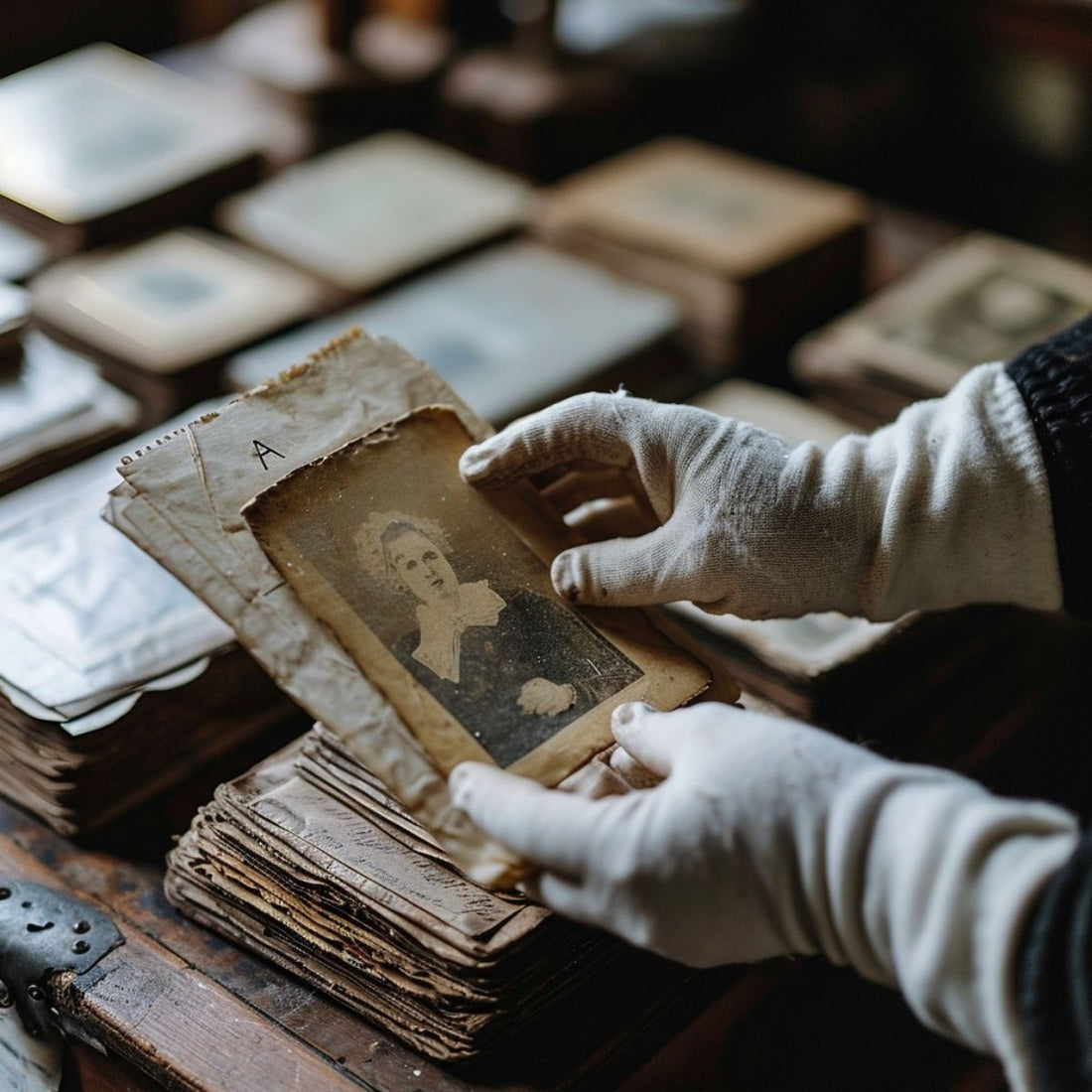
Are gloves needed when handling an antique sampler?

Should I wear gloves when handling antique samplers? How many of us have thought that white cotton gloves are a must for the safe handling of precious samplers? The answer is no, in most cases you do not need to wear gloves. However, each institute has their own policies on the matter.
In reality it depends on the situation and the textile. I find it interesting that I grew up with the idea that wearing cotton gloves was necessary and a symbol of superior care. Even after a decade when most institutions have abandoned this practice, I get negative comments on my videos when I touch my samplers with bare hands. For our beloved samplers no gloves are required.
The current scientific thinking today is that white cotton gloves are a no go for textiles. They can snag loose threads easily and accidentally pull threads out. They also don’t allow the finer examination of the sampler. If a sampler seems extremely filthy, (and I have had a few of those), wearing a mask and some well-fitting nitrile gloves makes more sense. It is more important to make sure your hands are clean, dry, and free from lotions or creams.
![]()
Wear gloves when handling certain textiles that might have been dyed with dangerous pigments. In the Victorian era, arsenic was widely used for many applications. One of them being a pigment dye, notably the vibrant Scheele's Green (1778) and a more stable Emerald or Brilliant Green (1814). It was also used in wallpaper, candles, curtains and more. Hats were brushed with mercury when making felt hats from rabbit fur. It made the fur stick together. Fashion at this time was riddled with dangers. Socks made with aniline dyes inflamed men’s feet and gave garment workers sores and even bladder cancer. Lead makeup damaged women’s wrist nerves so that they couldn’t raise their hands. Celluloid combs, which some women wore in their hair, exploded if they got too hot and we all remember the ‘Radium Girls.’ So yes, for these types of antiques wear gloves!
![]()
The National Archives recommend “gloves should be worn when handling materials that are marred by the natural oils on skin -- this includes photographs and film, metals, ivory -- and whenever there is a suspected health hazard (e.g., mold). Wear fitted, clean, lint-free cotton or nitrile gloves when handling photographs and films or directly handling film or tape (e.g., open reel instead of film/tape on a reel or cartridge). Use impermeable gloves if there is reason to suspect a health hazard (e.g., mold). Always handle collection materials with clean hands whether wearing gloves or not. “
Here are some of the reasons that wearing gloves was removed from the National Archives in 2013:
- Gloves can dull your senses
- Gloves can make you clumsy
- Gloves can catch on previously damaged edges
- Gloves get dirty
“Though clean gloves prevent the transfer of natural skin oils to paper, they reduce tactile sensitivity and increase clumsiness. Studies have shown that skin oils can affect how paper ages, but some preservation experts prioritize reducing the physical risk from reduced tactility;”

If you feel there is a need to wear gloves, do not choose cotton gloves but rather well-fitting nitrile gloves that are not too thick! They are made of a synthetic rubber that does not irritate, unlike latex.They provide dexterity for handling objects safely and will not snag on fragile surfaces of objects. They also protect the handler from debris or any toxic materials on the objects.
![]()
Specifically, the Library of Congress recommends the following:
“Before handling any collection item, thoroughly wash and dry hands. Contrary to widespread belief, gloves are not necessarily recommended to handle rare or valuable books. Gloves (nitrile or vinyl) are always recommended if there is reason to suspect a health hazard (e.g., mold, arsenic). Clean gloves (nitrile, vinyl, or lint-free cotton) are also recommended when handling photograph albums/photographs or books with metal or ivory parts. Aside from those specific situations, it is generally preferable to handle your books with clean hands, washed with soap and thoroughly dried, rather than with gloves.” Definitely, molds are very dangerous and detrimental to health; as it is not recommended to deal with moldy objects without gloves to protect yourself unless you are sure it is inactive. However, conservators should take into account all the necessary handling precautions. In the case of active molds, I urge you to use gloves and mask to handle these moldy materials.”

1 comment
You are 100% correct!!!!! Includes all textiles. Washing your hands is enough.
Miss your Floss Tubes, hope to see you again. Hugs, Lynn